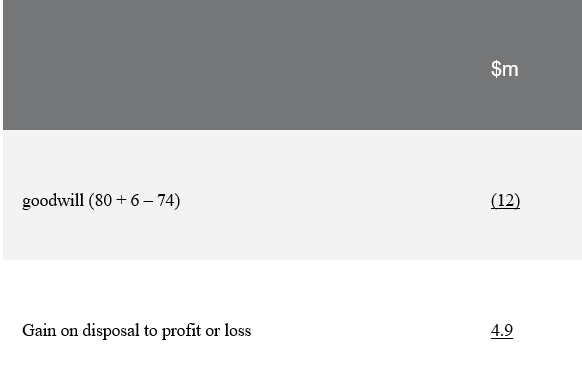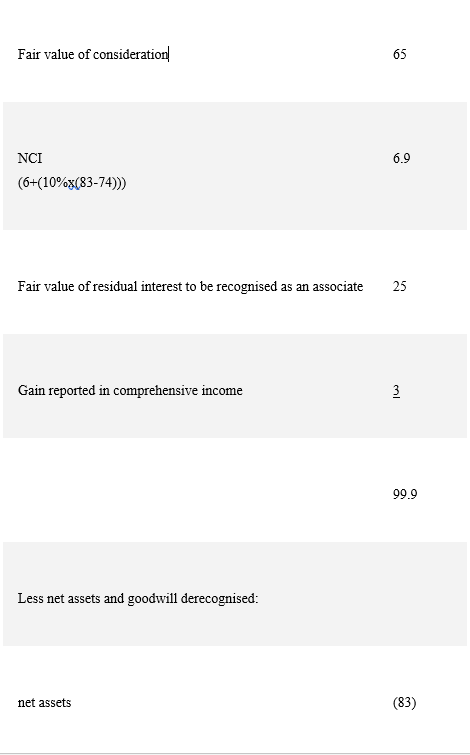Selling a Subsidiary? Understanding IFRS 10 When Disposing of Control
Companies don't always hold onto subsidiaries forever. Sometimes, they decide to sell their controlling interest. But how do you account for this in the financial statements? The International Financial Reporting Standard (IFRS) 10 provides guidance for these situations.
IFRS 10 and Disposing of Control
When a parent company loses control of a subsidiary, IFRS 10 outlines specific adjustments to the financial statements. Here are the key points to remember:
Derecognize Everything: You remove the subsidiary's assets, liabilities, and non-controlling interests (NCI) from your consolidated financial statements. This includes any goodwill associated with the acquisition.
Recognize the Cash: Record the fair value of the cash or other consideration you received from selling the subsidiary.
Value the Remaining Stake: If you retain a minority interest, determine its fair value and record it in your financial statements.
Reclassify OCI: Any portion of the subsidiary's profit or loss previously recognized in "Other Comprehensive Income" (OCI) needs to be reclassified to your current profit or loss. Imagine you're directly disposing of those assets and liabilities.
Example: Rage Sells Machine
Let's look at an example to illustrate these adjustments. Rage acquired 90% of Machine for $80 million. Machine's identifiable net assets were worth $74 million, and the NCI was valued at $6 million. Rage uses the full goodwill method.
Later, Rage decides to sell 65% of its ownership in Machine while retaining a 35% interest. The sale proceeds are $65 million, and the remaining 35% stake is valued at $25 million. Here's how the gain is calculated:
Gain on Disposal = Sale Proceeds + Reclassified OCI - Carrying Amount of Sold Interest
Machine's net assets increased to $83 million, with $6 million reported in profit or loss and $3 million in OCI.
Sale Proceeds: $65 million
Reclassified OCI (entire $3 million): $3 million
Carrying Amount of Sold Interest (65% x $80 million): $52 million
Gain = $65 million + $3 million - $52 million = $16 million
Challenges of Applying IFRS 10:
Briefly discuss the challenges companies might face when applying IFRS 10.
Determining fair value of the subsidiary's assets and liabilities, especially for intangible assets.
Identifying and reclassifying past OCI amounts related to the subsidiary.
Mention the importance of proper valuation techniques and using market data or other valuation methodologies.
Tax Implications:
Briefly touch on the potential tax implications of disposing of a controlling interest.
Taxes may be triggered depending on the sale proceeds and the subsidiary's location.
Recommend consulting with tax professionals for specific advice.
Disclosures Required by IFRS 10:
Briefly mention the key disclosures required by IFRS 10 for disposals of control.
The nature of the transaction and the reasons for disposal.
Description of the former subsidiary, including its fair value.
Gain or loss recognized on disposal.
Reasons for Disposal (Expanded):
Strategic Shift: Provide a concrete example. Perhaps Rage (from your original example) decides to sell Machine because it focuses on manufacturing, while Machine operates in software development.
Unlocking Value: Explain how selling a portion allows Rage to raise capital for further investments while maintaining some influence over Machine's strategic direction.
Regulatory Pressures: Briefly mention how antitrust laws might force Rage to divest part of Machine to avoid market dominance in a specific industry.
Partial vs. Full Disposal Comparison:
Elaborate on the derecognition step. In a full disposal, all subsidiary items are removed from the consolidated statements. In a partial disposal, only the proportionate share corresponding to the sold interest is derecognized (e.g., 65% of goodwill for Rage's case).
Explain the impact on gain calculation. A full disposal might result in a larger gain or loss compared to a partial disposal, reflecting the complete exit from the subsidiary.
Example Variation: Goodwill Impairment:
Introduce a scenario where Rage decides to sell due to Machine's declining performance, leading to goodwill impairment.
Explain how the impairment charge would be included in the gain calculation. Rage would first recognize the impairment loss, then calculate the disposal gain considering the sale proceeds, reclassified OCI, and the carrying amount of the sold interest (which would be reduced by the impairment).
Impact on Financial Ratios:
Provide an example. If Rage sells a significant portion of Machine, its total assets and liabilities might decrease, potentially improving its debt-to-equity ratio.
Briefly explain how the gain or loss can impact profitability ratios like ROE. A significant gain can inflate ROE in the year of disposal.
International Considerations:
Emphasize that IFRS 10 acts as a global benchmark, but some countries might have additional accounting standards.
Briefly mention the importance of consulting with international accounting professionals to ensure compliance with local regulations when disposing of a subsidiary in another country.
Additional Considerations:
Briefly discuss the accounting treatment for subsequent transactions with the former subsidiary, such as ongoing business relationships or the purchase of additional shares.
Mention the potential for post-disposal adjustments if the fair value of the remaining stake or contingent liabilities related to the disposal change after the initial sale.


Understanding Goodwill and NCI is crucial for interpreting financial statements after a business acquisition. The chosen method for NCI valuation can impact the reported Goodwill amount, affecting metrics like net assets and potential future impairment charges.